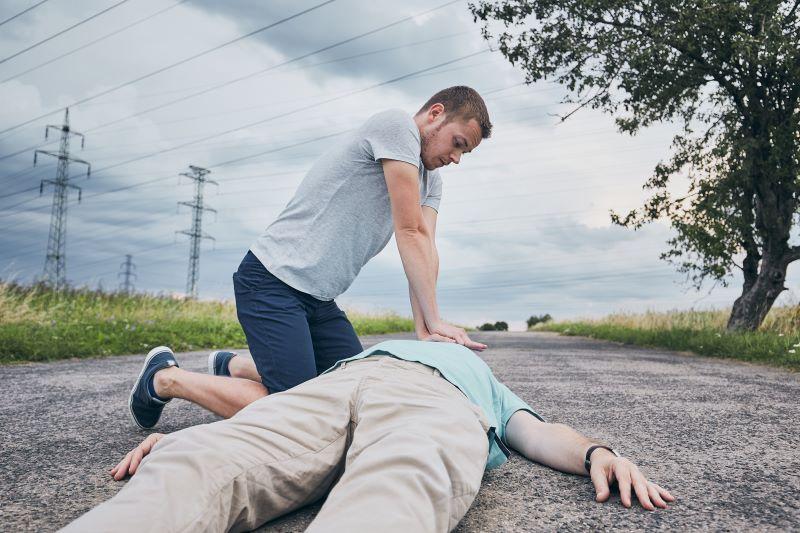Get Healthy!

- Cara Murez
- Posted September 14, 2023
40% of Patients Recall Some Consciousness During Near Death Experiences
People have long talked about having near-death experiences in which they felt they were looking down on themselves while others tried to save them.
Now, researchers have documented some of those experiences. In a study published online recently in the journal Resuscitation, investigators found that nearly 40% of patients recalled some degree of consciousness that occurred while they were seemingly unconscious and dying. Of those, 21.4% had lucid recall of their experience.
"These lucid experiences cannot be considered a trick of a disordered or dying brain, but rather a unique human experience that emerges on the brink of death,"lead researcher Dr. Sam Parnia said when the research was first presented at an American Heart Association meeting late last year. He's an intensive care physician and associate professor in the NYU Grossman School of Medicine in New York City.
"Our results offer evidence that while on the brink of death and in a coma, people undergo a unique inner conscious experience, including awareness without distress,"Parnia added.
The study involved 25 hospitals in the United States and the United Kingdom. In it, researchers studied 567 hospital patients whose hearts stopped during their stay between May 2017 and March 2020. The patients all received cardiopulmonary resuscitation (CPR) immediately, but only 10% were discharged from the hospital.
The experiences these patients described included a perception of separation from the body. They reported observing events without pain or anguish. The time also included a meaningful evaluation of life.
These experiences of death were different from hallucinations, delusions, dreams or CPR-induced consciousness, the researchers said.
Patients were also tested for hidden brain activity during this time. The researchers found spikes of brain activity up to an hour into CPR. These included gamma, delta, theta, alpha and beta waves.
Some of these brain waves typically happen when someone is conscious and performing higher mental functions, including thinking, memory retrieval and conscious perception, according to the study authors.
"These recalled experiences and brain wave changes may be the first signs of the so-called near-death experience, and we have captured them for the first time in a large study,"Parnia said.
Together this suggests the human sense of self and consciousness may not stop completely around the time of death, Parnia said. This is much like other biological body functions.
The study authors further explained that at death, many of the brain's natural braking systems are released in what is called disinhibition. A person has access to the depths of their consciousness, from early childhood memories to other aspects of reality.
This reveals "intriguing questions about human consciousness, even at death," Parnia added, noting further research is needed.
Still, the study has its skeptics.
"This latest report of persistent brain waves after cardiac arrest has been blown out of proportion by the media. In fact, his team did not show any association between these brain waves and conscious activity,"Dr. Bruce Greyson, a professor emeritus of psychiatry and neurobehavioral sciences at the University of Virginia School of Medicine, told CNN. "That is, those patients who had near-death experiences did not show the reported brain waves, and those who did show the reported brain waves did not report near-death experiences."
Greyson, co-editor of "The Handbook of Near-Death Experiences: Thirty Years of Investigation,"said he and cardiologist Dr. Pim van Lommel, a Dutch researcher who focuses on near-death experiences, submitted comments to the journal in which they pointed to the study's statement that "two of the 28 interviewed subjects had EEG data, but weren't among those with explicit cognitive recall."
"All [the study] has shown is that in some patients there is continued electrical activity in the head that occurs during the same period that other patients report having NDEs [near-death experiences],"Greyson said.
Parnia acknowledged the study was not able to match electrical activity with a near death experience in the same patient.
"Our sample size wasn't large enough. Most of our people didn't live, so we didn't have hundreds of survivors. That's the reality of it,"he told CNN. "Of those that did live and had readable electrocardiograms, 40% of them showed that their brain waves went from flatline to showing normal signs of lucidity."
In addition, Parnia said, people who survive often have fragmented memories or forget what they experienced due to heavy sedation in intensive care.
"Absence of record doesn't mean there's an absence of consciousness,"Parnia said. "Ultimately, what we're saying is, 'This is the great unknown. We're in uncharted territory.' And the key thing is that these are not hallucinations. These are a real experience that emerges with death."
More information
The American Heart Association has more on CPR.
SOURCES: NYU Langone Health/NYU Grossman School of Medicine, news release, Sept. 14, 2023; Resuscitation, July 7, 2023; CNN

